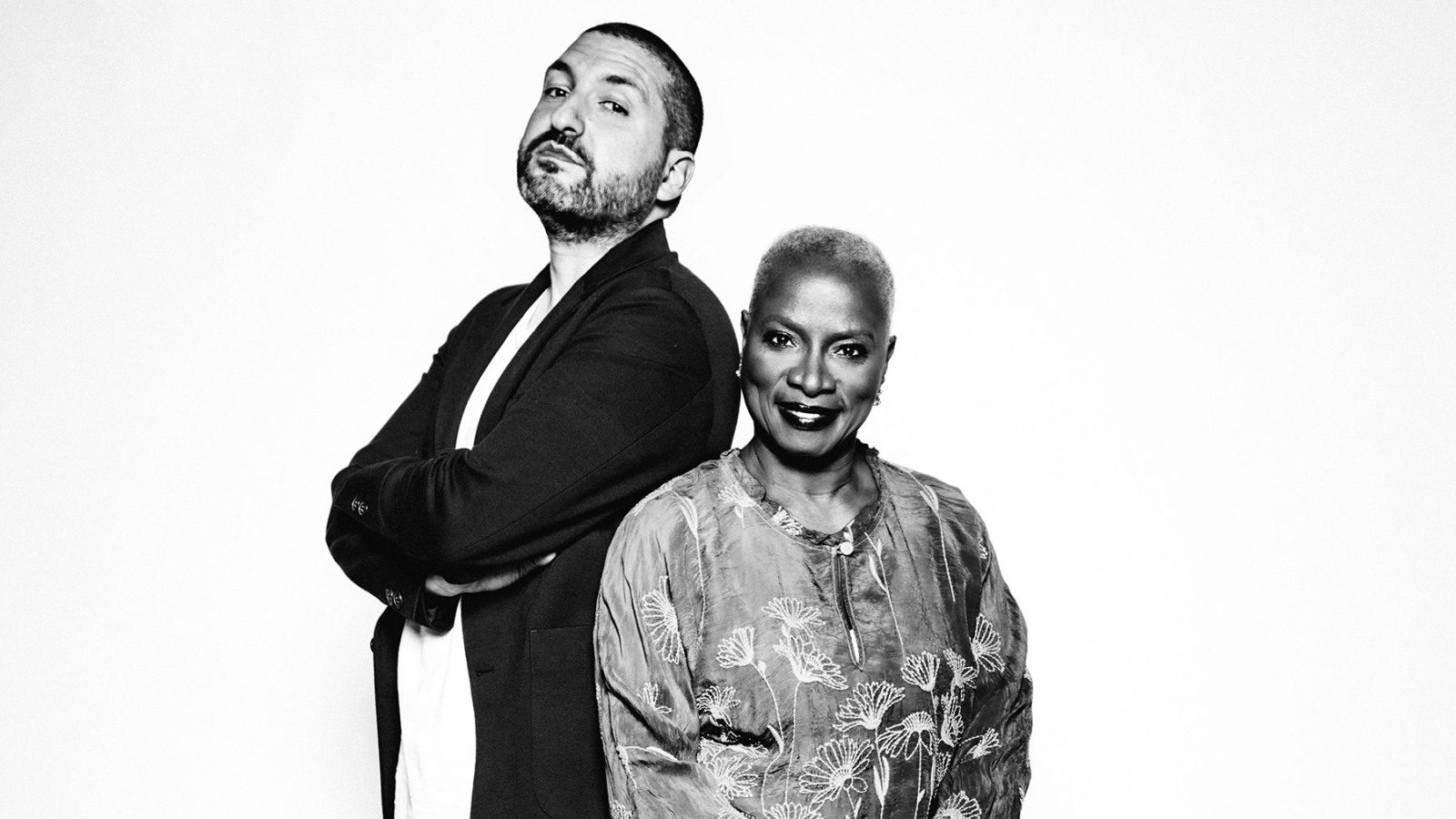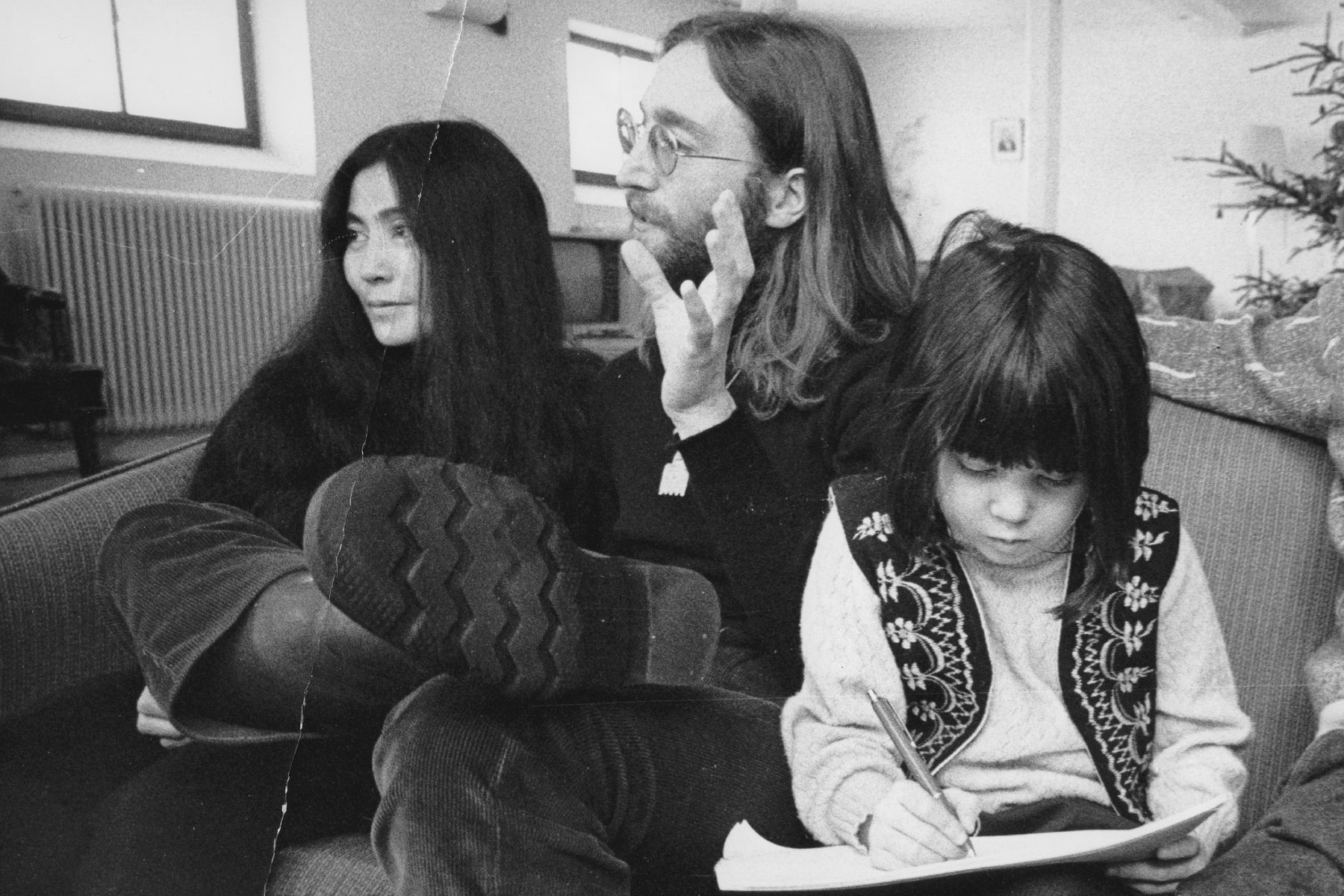
Angélique Kidjo and Ibrahim Maalouf on Using Music and Myth to Connect Across Cultures
It’s a story thousands upon thousands of years old, yet two widely acclaimed musicians have now blown the dust off the ancient tome. Queen of Sheba, the 2022 album from singer Angélique Kidjo and trumpeter/composer Ibrahim Maalouf, breathes new life into the legendary tale of Sheba, an Ethiopian queen who travels to Jerusalem to speak with King Solomon. Their meeting is considered the first one between Africa and the Middle East, a story marked by collaboration for the betterment of millions of people. It’s reflective of Kidjo and Maalouf’s own story — she comes from Benin, he from Lebanon — creating a phenomenon of togetherness in concert. Though they originally intended only a handful of live performances together, an actual album became necessary once the magic of those performances were realized. So they recorded a seven-part suite blending their cultural styles and backed by a full orchestra. Maalouf composed and produced the entire album (and contributed the trumpet), while Kidjo wrote and sang enigmatic riddles in Yoruba to honor the story.
Queen of Sheba is in the running for Best Global Music Album at the Grammy Awards this weekend. It’s Ibrahim’s first nomination and Kidjo’s 14th — if they win, it will be her sixth time. (She is also nominated for the song she contributed to the film The Woman King.) Ahead of the awards ceremony, we connected virtually to speak about the importance of the Sheba and Solomon story, their experience working together, and what kind of meal such an epic meeting deserved.
How did this go from a live performance to an album?
Ibrahim Maalouf: I would say that it’s the only project I did in my whole entire life that really started the way it should start. We started this very spontaneously, naturally, which is, “Let’s do the shows.” At the last concert we did, we hugged and thought, “It can’t stop like this.” I said to Angelique, “I produce my own albums. I have my own label. Maybe I should invest a little bit of money and record the orchestra and do this, because we should not forget this beautiful project. This has to exist at some point.” Thankfully, Angelique accepted.
Angelique, your lyrics began as reinterpretations of the riddles from the legend. How did you go about that process?
Angelique Kidjo: I’m known to do collaboration, but all my collaborations always have a story to tell. Ibrahim with his trumpet and his music, he’s telling the story. I wanted to find out what is the link between the Middle East and Africa, because the world has been divided politically for different reasons. The Queen of Sheba, you see her in the Catholic religion, the Muslim religion, the Jewish religion. She’s everywhere. She’s reconciling people. That’s what we need this world to be. So for me, this album — the riddles we chose and Ibrahim’s music — is timeless. It shows, through music, we can.
You’re probably the most perfect person to interpret the Queen of Sheba. You’re from Benin, but all of Africa often feels like you’re theirs.
AK: I don’t take it lightly. It’s a beautiful continent to carry on my shoulders. I grew up hearing the story of Queen of Sheba. I heard the courage that it took an African Black woman to travel all the way to see King Solomon, believed to be the wisest king, and to learn from that wisdom to be able to lead a people. We don’t have that kind of humility today. I chose all those poems to remind ourselves that we have the same space to share, we all are born the same. It doesn’t matter the skin color we have.
Ibrahim, when you began composing to Angelique’s lyrics, did this project present new musical opportunities for you?
IM: The most interesting part of my work in this project, musically, technically was using Angelique’s voice. I have never heard anyone singing like her. Rhythmically speaking, she can do things that many people can’t. She’s the most important instrument on this project. After she sent me the lyrics, I asked her to send her own voice reading the text, so that I know exactly how the tone is. I composed the melodies based on the way she was reading. Then I plugged all the instruments, the drums, the bass, the choirs, the orchestra, strings and all this — everything — into her. I gave the trumpet an important place, of course, especially since Angelique wanted the trumpet to be equal to her voice on the album.
AK: Ibrahim made this music singable for me. He never forces me to adapt what I have to say. The words were exactly as they were meant to be.
Sheba’s story is about traveling to learn, and the fruits that come from that. Both of you live outside of where you were born. I don’t know how you feel about the phrase “you can’t be a prophet in your own land,” but how has leaving where you’re from impacted your work?
AK: I don’t know where I’m going to end up. I don’t even know where I’m going. But what gives me confidence, strength, and makes me stay tall in my shoes, is that I know where I come from. Who you are is who you are. It’s not going to be easy to be you 100 percent every day. But hey, you can’t please everybody. As my father’s mother says, “God sent us his Son. What did we do? We crucified him. So who the hell are you to think that people are going to love you?” I’m like, “Yes, grandma. Thank you. I’m not Jesus.”
IM: I also would say that origin is something, identity is something else. What I love in Angelique is what I’m trying to seek in my own life: she’s limitless and boundaryless. That’s what we are made for, traveling, meeting other people. When you have nothing to hide, you have everything to share. I believe this comes from the fact that we traveled a lot, we had to leave our countries at some point, and we love where we are from.
Angelique, I hear you’re quite the home cook. Now that you’ve spent so much time with this story, what meal would you make for Sheba and Solomon if all four of you sat down together?
AK: It’s going to be a mixture of food. I’m pretty sure if they were to eat together today, they’re going to have a lot of things in common. I’d bring gumbo, man. You just put everything in it.
IM: I don’t cook well, but I would bring Lebanese bread. It goes with everything.
AK: Oh! And hummus, man. I love Lebanese hummus.
As a special bonus to this interview, Kidjo offered to share her recipe for Crab Curry with Saffron Jasmine Rice. It’s not quite gumbo, but it’s pretty darn close. “We often ate crab growing up in Benin, either in a gumbo or a carb-and-spinach stew, both very traditional dishes in West Africa,” she says. “I learned this method of preparation from a South African friend of mine who is of Indian origin.” Find the recipe below, originally printed in her book Spirit Rising.
SERVES 6.
INGREDIENTS
Scotch bonnet pepper mix:
20 Scotch bonnet peppers, stemmed and rinsed
1 medium red or sweet yellow onion, cut into large dices
1 Tbsp. coarse salt
¼ cup olive oil plus 2 Tbsp. for topping the jar
Crab
10 quarts of water
3-4 Tbsp. coarse salt
12 6-7½-inch live blue crabs, preferably female
Curry
3 Tbsp. olive oil
2 Tbsp. tomato paste
1 16-oz. box Pomi-brand strained tomatoes
1 raw sugar cube
1 heaping tsp. whole cloves
1 heaping tsp. coriander seeds
2 Tbsp. ground turmeric
1 tsp. pepper mix
Coarse salt, to taste
Saffron Jasmine Rice
3 cups low-sodium chicken stock or water
2 cups jasmine rice
1 pinch saffron threads
½ tsp. coarse salt
PREPARATION
Prepare the Pepper Mix
Combine the scotch bonnet pepper and onion in a blender. Add salt and puree until coarsely chopped. Add ¼ cup olive oil and puree until combined, scraping down the sides of the blender as you go. The mixture should be coarsely pureed. Transfer to an airtight container and set aside immediately. (This makes about 2 cups, more than the recipe calls for. The remaining mix can be refrigerated in a jar and topped with olive oil and a tight-fitting lid.)
Prepare the Crab
Combine the 10 quarts of water and salt in a large pot and bring to a boil. Add the crabs and boil for 12-15 minutes. Drain the crabs and rinse under cold water. When cool enough to handle, clean the crabs and set aside.
Make the Curry
Heat olive oil in a large dutch oven or heavy-bottomed pot over medium heat. Add the tomato paste, salt, strained tomatoes, sugar cube, cloves, coriander seeds, turmeric and 1 tsp. scotch bonnet pepper mix, stirring well to combine. Cook 10 minutes. Add the crabs and ½ cup water. Reduce heat to medium and cook covered, stirring frequently for 25 minutes or until crabs absorb the sauce.
Prepare the Saffron Rice
While crabs are cooking, bring chicken stock or water to a boil over high heat in a large saucepan with a lid. Add saffron, salt and rice and store well. Return to boil, then reduce heat to low, cover and cook 12-15 minutes, or until liquid has been absorbed by the rice. Remove the pot from the heat and set aside, covered for 5-10 minutes, to finish stemming the rice.
Fluff with a fork and serve with the crab curry.
A Note on Buying and Cleaning Crabs
Buy fresh, local, live crabs. They are available in warm water all months of the year. Reputable fish markets will often have live crabs, but call before you go. Once they arrive at the market, they are only good to be sold for a couple of days.
For this recipe, buy female crabs, also called sooks, because their egg roe adds a delicious element when added to the curry. Females can easily be identified by the orange color on the tips of their claws. Look for crabs that measure 6-7 ½ inches from point to point on their hard shell. This is the ideal size for the crab curry.
To clean the crabs after they have been boiled, first remove the claws from the body. Then, using the dull side of a knife, chop off the tips of the claws and crack the claws in several spots so when served, the shell comes off easily. Next, trim off the first two joints of each of the legs, leaving only the part that has meat in it. Slip your finger under the apron (this is a narrow and pointy plate in the male or a wide, triangular plate in the female), peel it back and discard. Then wedge your thumb under the top shell, pull it away from the body of the crab and discard. Now clean the inside. Remove the feathery cones that line the inside of the body. These are the lungs and they are toxic, so be sure to get all pieces of them out. Reserve the eggs if the crabs are female, but scrape out the gooey innards and discard. Finally, run the crab under cold water to rinse, and cut it in half.



